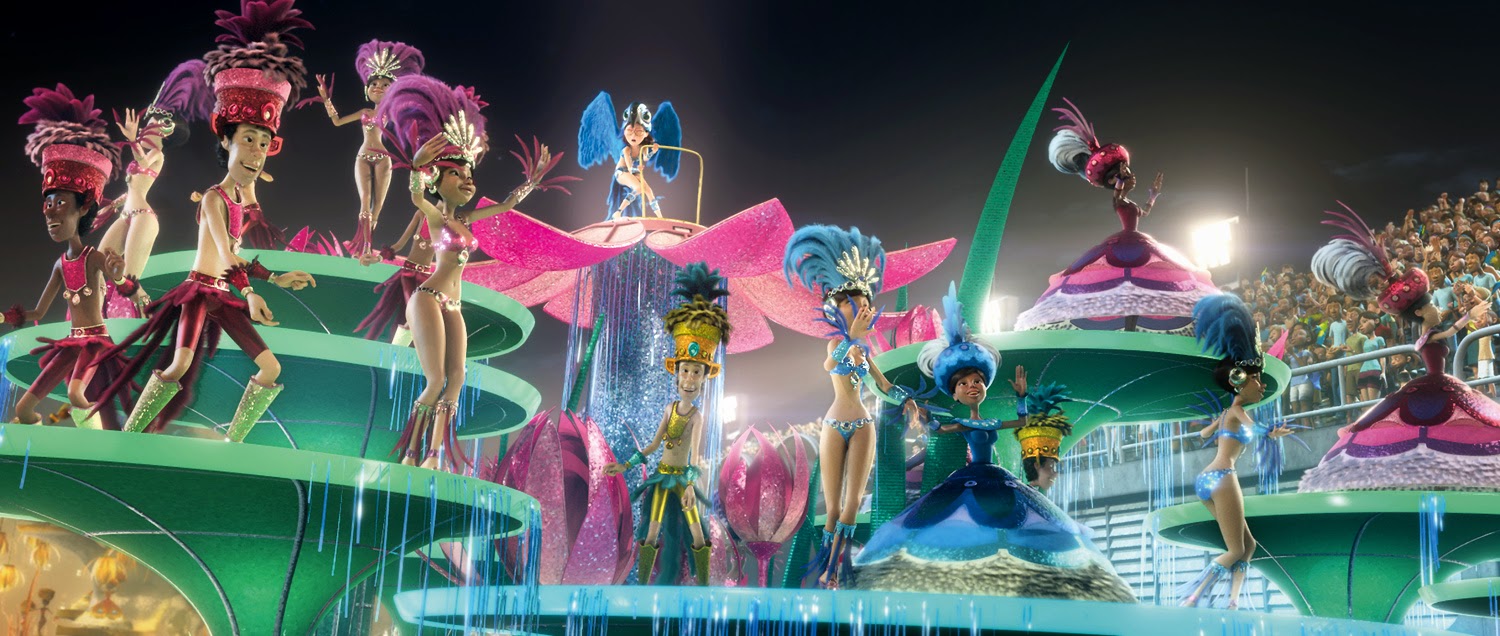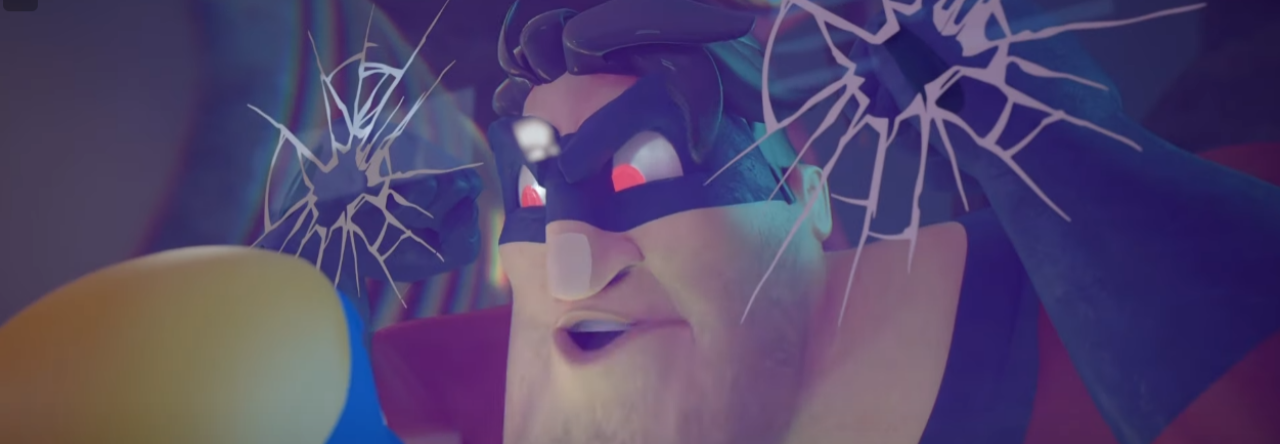During the Summer Term, our supplemental general Art Class is Story Class with Moroni Taylor, free for all AnimSchool students!
Moroni has storyboarded on 14 features including Iron Giant, Ice Age, Horton Hears a Who, Rio and recently Epic.
In this clip, he goes over a Critique of a Storyboarding Assignment to one of our students, Ayman Moadad. Watch it below:
Come join all the students learning online at AnimSchool: http://www.animschool.com
Month: August 2014
We would like to welcome Mark Tan, one of our latest graduates from the 3D Animation Program.
 |
| Mark’s drawing at 5 years old. |
Like many others, I grew up drawing what I saw. I didn’t just like drawing figures, but telling a story. My very first creations I made as a kid (around 5 years old) had a scene drawn along with a story written.
Along with learning animation, my interest in filmmaking blossomed during college as well. I watched thousands of films (live action and animated), read screenwriting books, and started to make shorts/music videos.
I chose animation as a profession because I believe at the core of every well told story is a strong believable performance. Animation gives us the ability to explore the personality of any character without the hinderance of our outward appearance.
What’s the best part of online education?
The best part of online education is having access to some of the most skilled in the industry today without having to travel at all. I told myself before enrolling that if these guys can’t help me improve drastically, then I’m not trying hard enough!
What do you like the most when animating?
I really enjoy shooting video reference prior to going on the computer. There is something special about actually acting out your scene. The possibilities seem endless. There are also quirks and small details captured on video that can be helpful as well. It is much easier to approach a shot when you have the majority of your movements and expressions locked down in a video edit.
What type of animation inspires you?
I can’t really say I favor any type of animation, but I can mention a few scenes/shorts that inspire me.
1. Seeing the work of Min Hong, Alaa Abu Hanish, James Kim, and many others before and during Animschool fueled my motivation to improve.
2. I will always remember the shot in Finding Nemo where Dory tells Marlin that when she looks at him, she’s home. It’s amazing how much is achieved with a character that’s basically a floating face with fins.
3. Another scene I always enjoy watching is Presto. The staccatto movements and upright poses of the magician purely give way to his whole personality in one shot. There is a lot of fun animation in the whole short, but the held poses are what seem to be the funniest to me.
4. I was really into the early works of Nick Park, Bill Plympton and Don Hertzfeldt when I started out college years ago. I found shorts like “Creature Comforts”, “How to Kiss” and “Rejected Cartoons” to be very entertaining.
You’ve done some great shots along the way at Animschool and some of them have been featured at the Student Showcase. Which one did you like the most? How was your workflow for this shot?
I think my most successful shot came out of class 6 with Melvin Tan. He was the most picky and pushed me the hardest on my shot from start to finish. I chose a very challenging audio clip after hours of searching, and that was just the beginning of the journey.
I approached the video reference like I always did, but I remember Melvin had very clear and distinct decisions on what didn’t work for him. The main notes of the first reference was to make the performance more confrontational by breaking less eye contact in the beginning of the scene. After about 50 total takes, I finally reached something close to begin animating with.
In what ways do you think Animschool has helped you to be a better animator?
Animschool’s animation program structure helped me sharpen my skills from the ground up.
In Animating Characters, two major things I picked up was the idea of lead/follow, as well as how to balance the weight of your character in space.
In Body Acting, texture was a big focus on how to break up the flow of the dancer in the subway to add more interest. Also, the opening up of the face for eye direction, avoiding wall eyed positions of the irises, proper spacing/smear frames, and the importance of breaking down video reference better (and enhancing the appeal in your work).
The last three classes involved more complex characters and lip sync. I learned a lot more about polish and all the little details that really make your shot shine. The most important thing throughout this back end of the program was that I learned what it takes to finish a good shot.
Any advice or tip that you remember from an instructor that you’ve had along the way?
Lead and follow has helped me a lot. Choosing what to lead the action to another pose always helps to break up the animation and add a more natural feel. Though I have gone too far sometimes, this concept is always on my mind.
Are you currently working in the animation industry? Tell us about it.
I am currently trying to get work in feature films. My last gig was animating Ninja Turtles for promotional and commercial spots for the movie. Some of it was recently used in a music video for a song from the movie’s soundtrack.
How do you see yourself in 5 years time?
Right now I’m hoping to be making a living working in the movie industry. I don’t know what 5 years in the future holds for me, but I’m going to put my effort in one day at a time and see where that takes me.
Any hobbies, sports or other activities that you would like to share with us?
I’m into weightlifting, play basketball regularly, and occasionally play tennis. When not sitting at a computer, I try to stay as active as possible.
Any quote to get yourself motivated?
Save nothing for the swim back.
What are your plans now that you’ve graduated from Animschool?
As I stated earlier, I want to gain experience in the animated film industry. I have worked on video game cinematics, video game animation, and television. I have recently started the job hunt. Wish me luck!
Mark, thank you very much for this interview and all the best for your future outside Animschool!
Watch Mark’s demo reel:
Videography reel:
In AnimSchool’s Body Acting, Disney Animator Tony Bonilla analyzes work of Buster Keaton, the legend of the Silent movies era.
Come join all the students learning online at AnimSchool: http://www.animschool.com
Today we are having a very nice conversation with Kevan Shorey, one of the instructors at our General Reviews. Kevan is an Annie-nominated Feature Film Animator at Dreamworks Animation (PDI).
 |
| Chris Bancroft made this caricature for his friend. |
Tell us a little about yourself, what’s your background? How did you get into animation?
I enjoy the the hybrid approach. The opportunity to blend the two styles that allows for moments of sophisticated acting to contrast with the fun and energy of pushed, larger-than-life action.
What is the best experience you’ve had so far in a production environment?
In what project are you working on? What workflow are you using right now at it?
Having worked in so many cool feature films, what goals do you have?
Web: kevanshorey.com
Twitter: @kevanshorey
In this clip, Blue Sky Animator and AnimSchool Instructor Thom Roberts explains in a simple way fundamental animation principles like Overlap, Follow Through and Drag. Watch it below:
This is a clip from AnimSchool’s class Introduction to 3D Animation, the 1st term of the 3D Animation Program. To find out more, go to AnimSchool.com and apply now!
Today we are talking with Brandon May, who works as a Lighting TD at Blue Sky Studios and teaches Introduction to 3D Lighting at Animschool.
I am currently working on Peanuts. My job right now is pretty – extremely laid back. This project does not release for another year and a couple months, so we are not doing much. Ha ha. For a lighter, the work comes in waves. When we have work, we have a lot to do, and then we get a break. When we break, we have nothing to do. It is a schedule I enjoy, but it is not for everyone. Definitely not a steady work flow.
What’s been your inspiration throughout your career? Any mentors along the way?
My inspiration throughout would be my wife. I love her and she is my support and motivation. My mentors along the way would be Youngwoong Jang and Angel Camacho. Two uber crazy talented people and I hope to become as good as they are someday.
One nice thing about working where I do, I don’t have to have mentors from anywhere else. I work with some of the most talented artists in the world. Especially when it comes to feature animation art.
The lighting style in Blue Sky productions like Epic and Rio 2 is really captivating, can you tell our blog readers how you go about applying lighting to the scenes? Is there any particular process that you guys found effective?
The lighting on Epic was handled differently than Rio. With every show, we have art directors who have a visual goal that will separate the look of this film from that film. At the beginning, we work at finding what that style is and match it. Much time is spent getting that look before the production begins. The process is trial and error. We light and push back the frames and problems we see to the appropriate departments to make changes so that those issues are resolved to make the process as streamlined as possible.
 |
| “Rio”. Twentieth Century Fox Film Corporation. All Rights Reserved |
 |
| “Rio”. Twentieth Century Fox Film Corporation. All Rights Reserved |
 |
| Picture from the Book: “The Art of Rio” by Tara Bennett |
 |
| Picture from the Book: “The Art of Rio” by Tara Bennett |
 |
| “Epic”. Twentieth Century Fox Film Corporation. All Rights Reserved |
 |
| “Epic”. Twentieth Century Fox Film Corporation. All Rights Reserved |
What goals do you have in your class Introduction to 3D Lighting? Who should attend the course?
Goals for the lighting class are simple. Teach the students basic principals of lighting and color, and help them feel more comfortable when plusing their demo reels. I think that every little bit helps when making a demo reel. If your animation, or rig looks great, but so does the guy that is your direct competition, what gives you the higher ground? I think it is making an overall visually impressive reel. It shows problem solving, and that you are competent in many artistic ways. This class will help push you in that direction.
What is the most enjoyable thing about teaching online for you?
I actually like to see the growth. It is fun watching students grow artistically but in confidence as well. Both are important. I also like to see different styles from so many different cultures that are in the class room. An online class makes the world come together in a single room, and we get to experience a small piece of their culture through their art. It is actually, fantastic.
We thank Brandon very much for taking the time in doing this piece.



